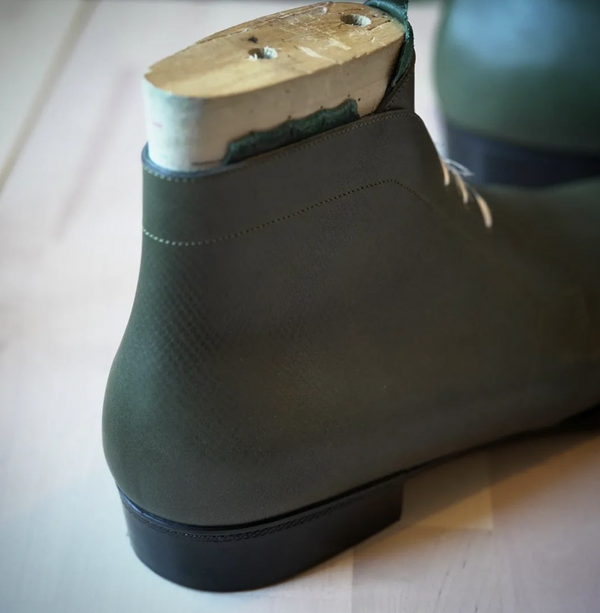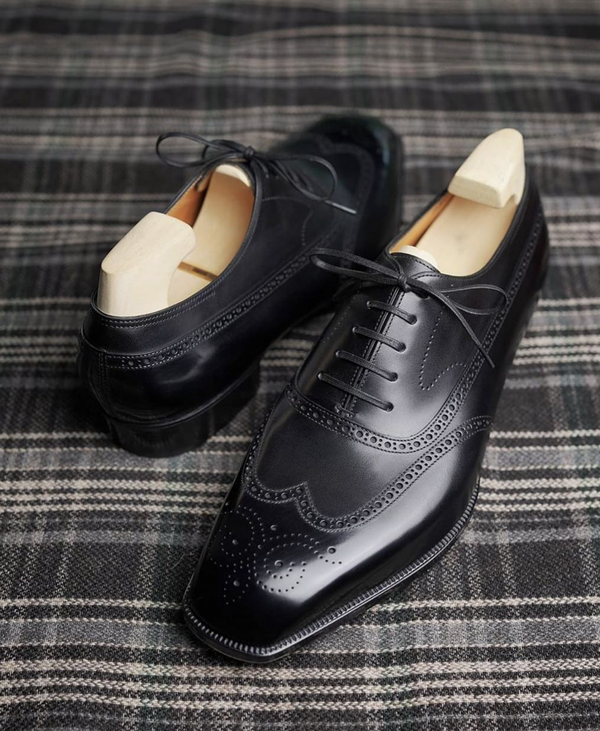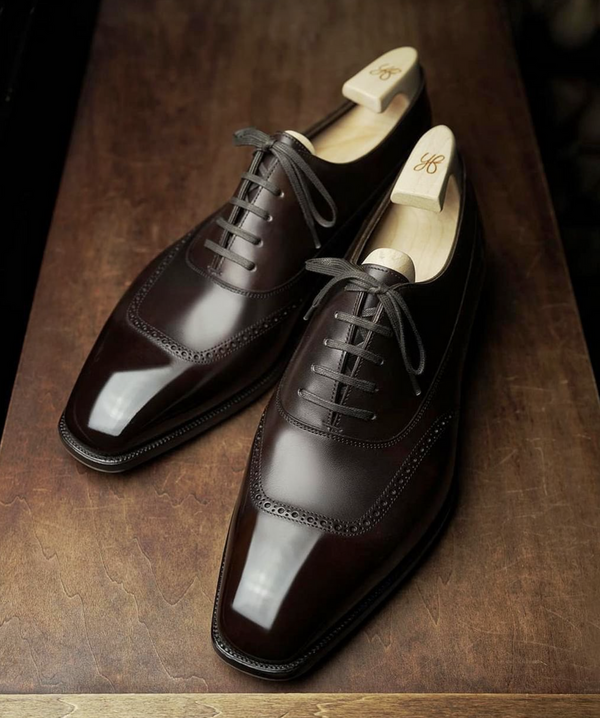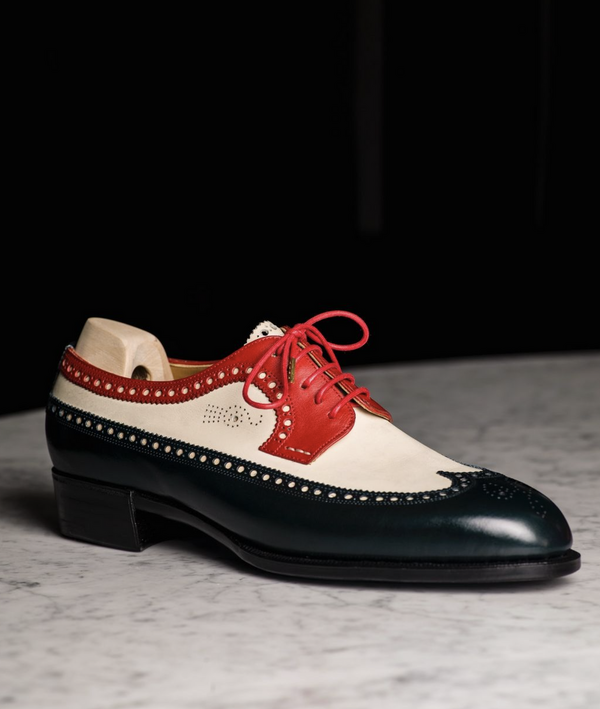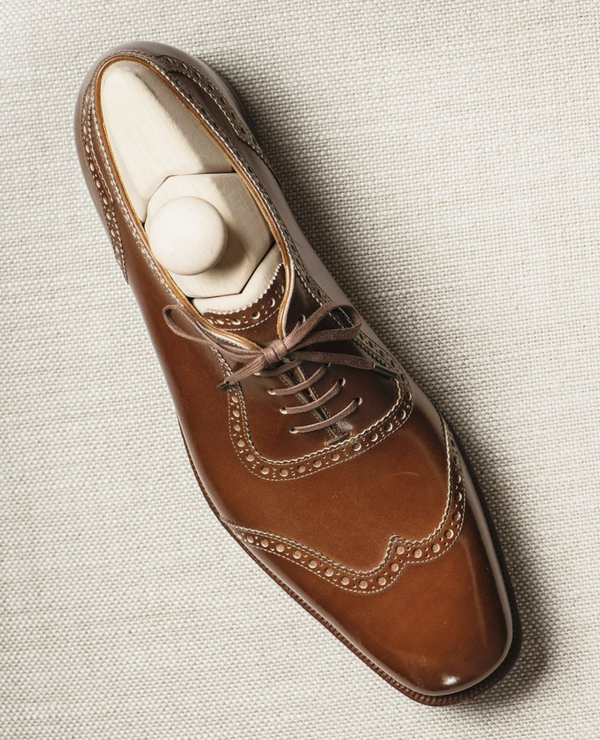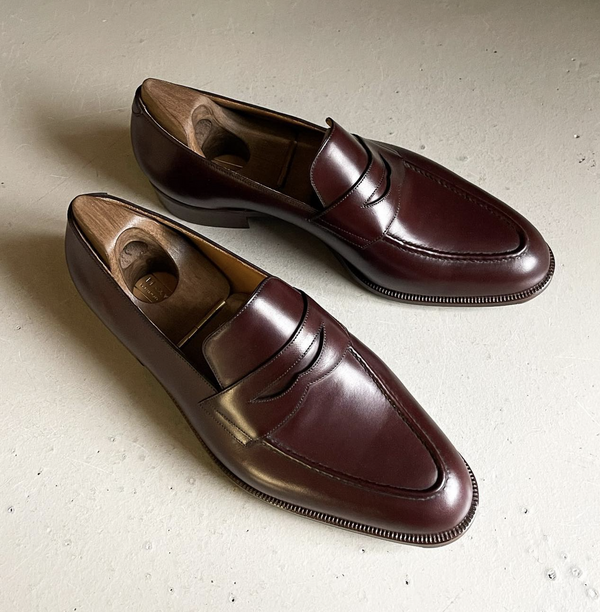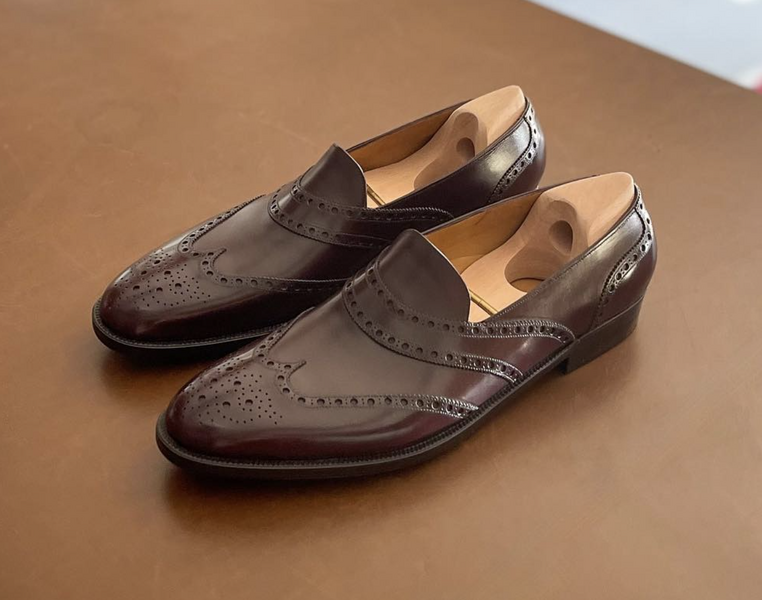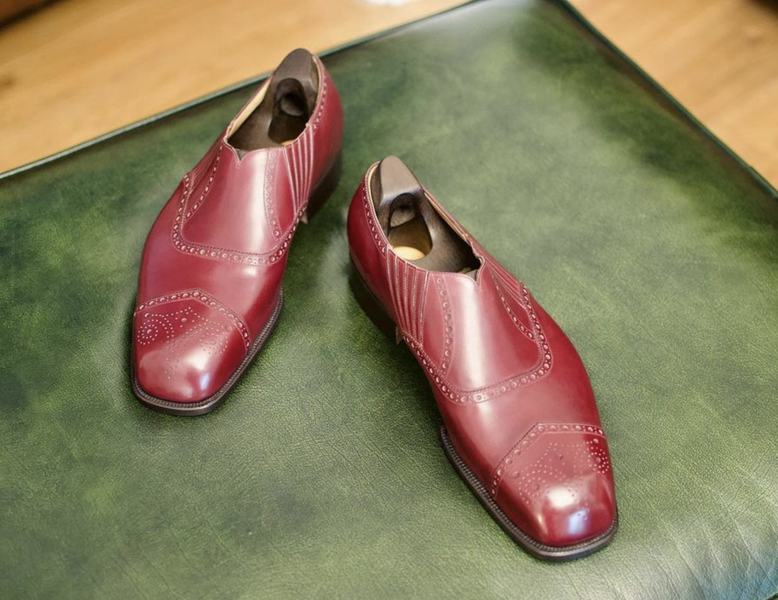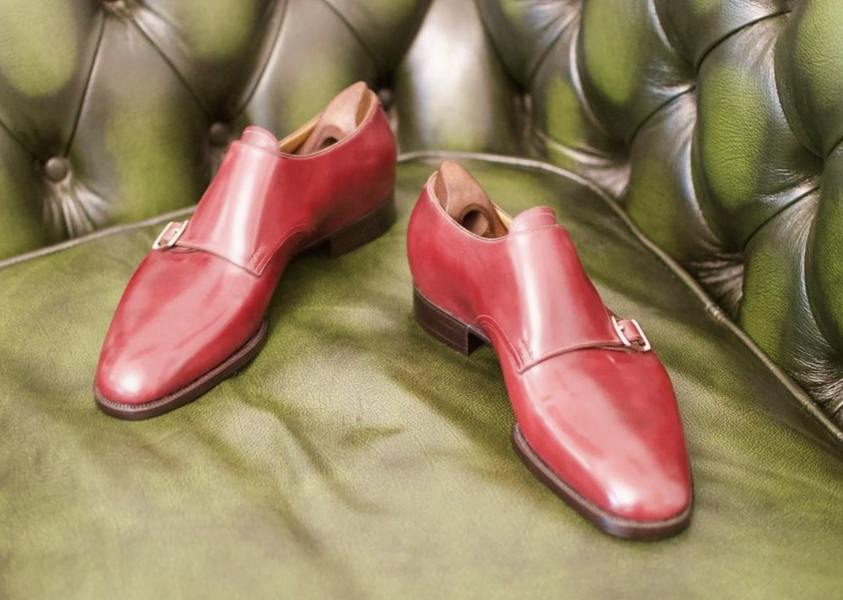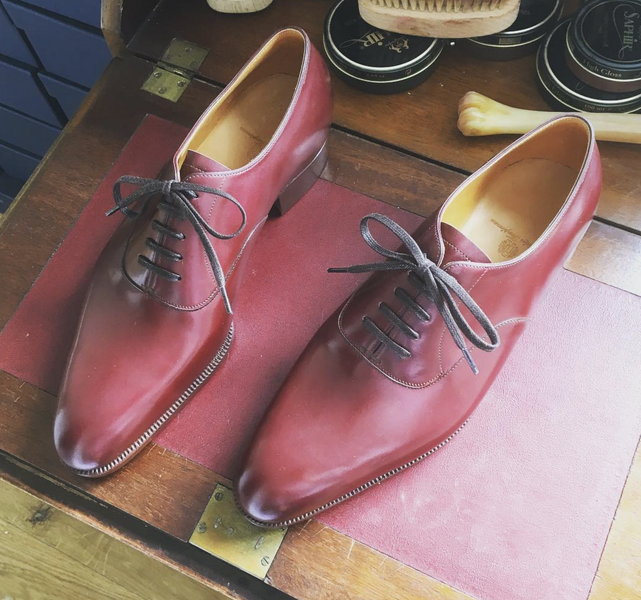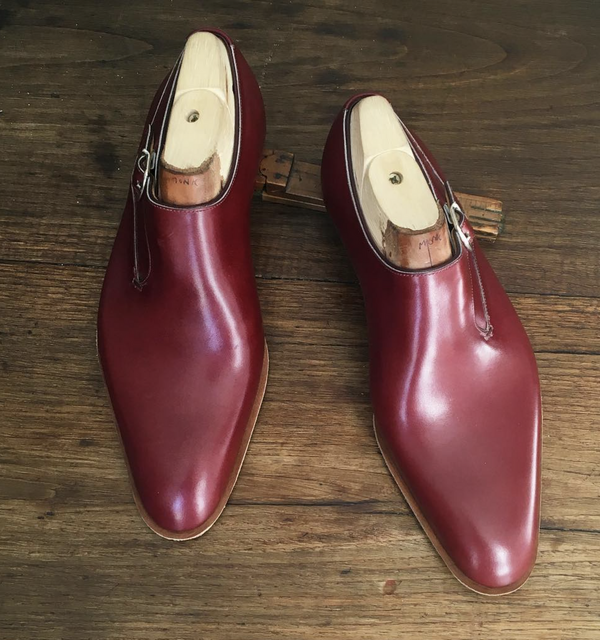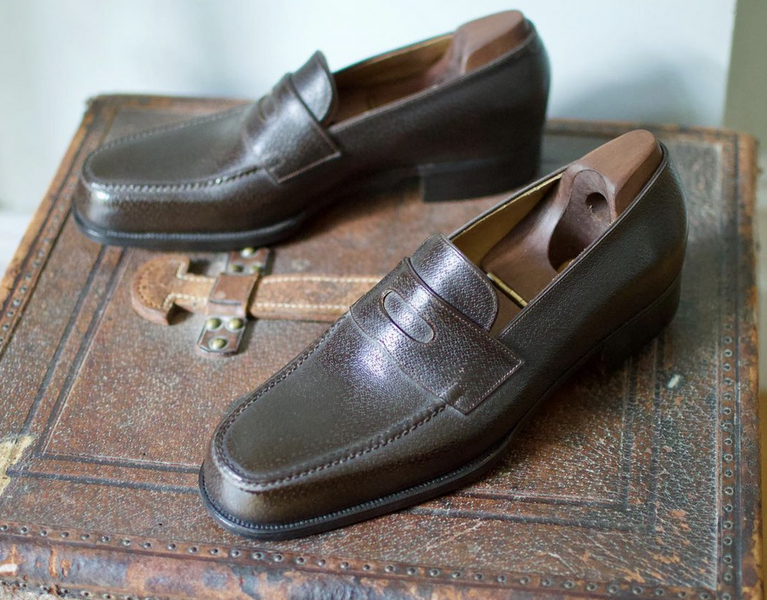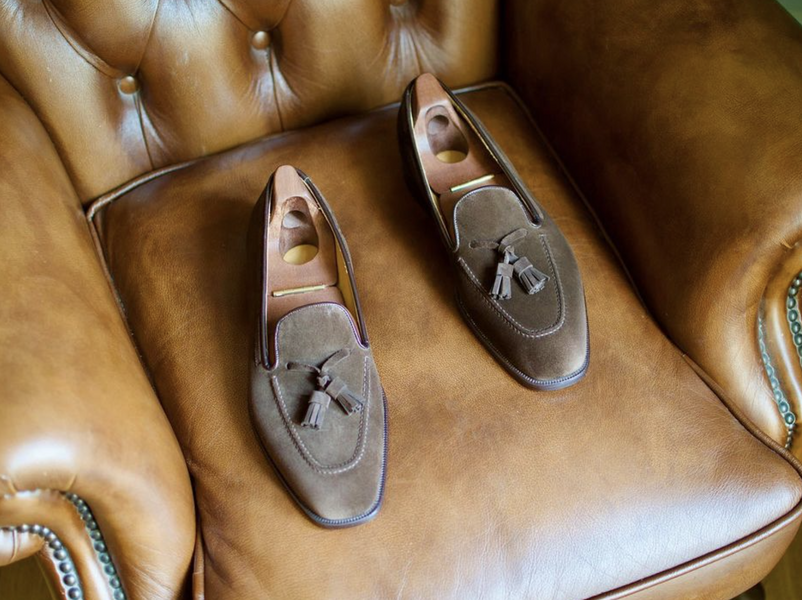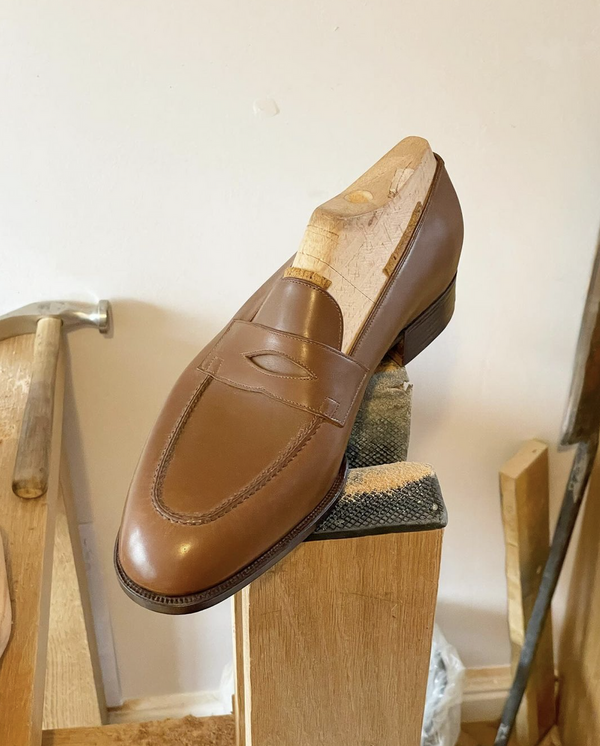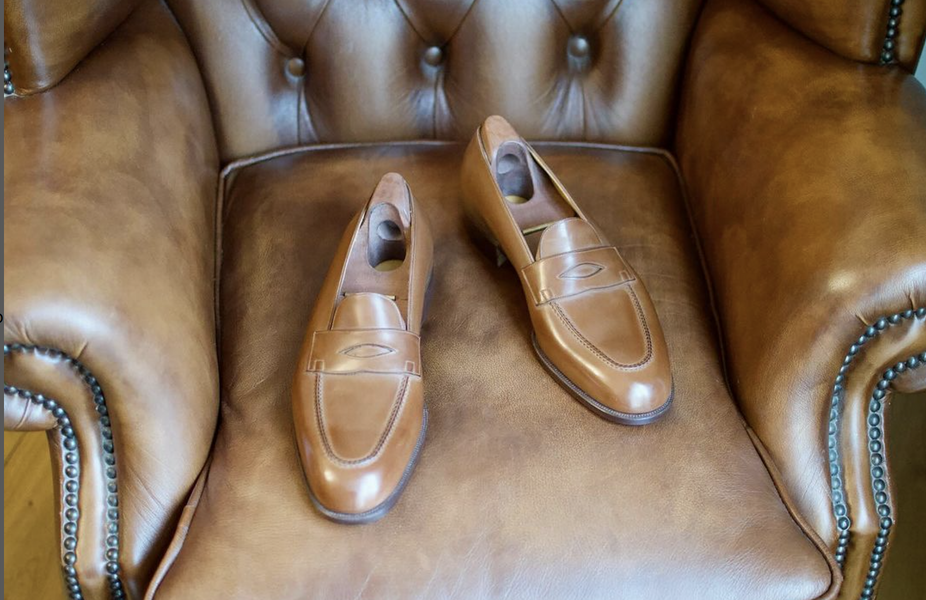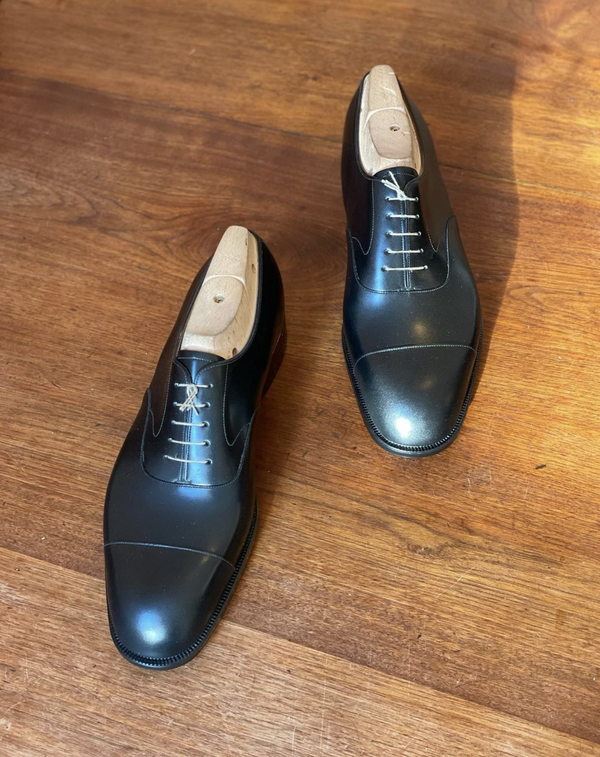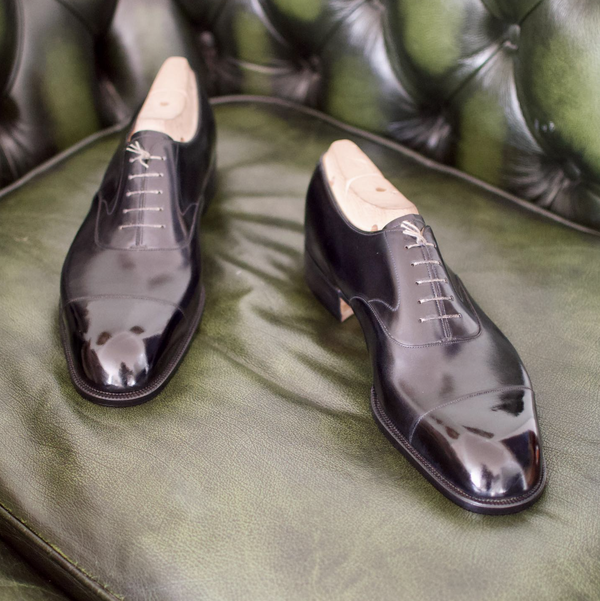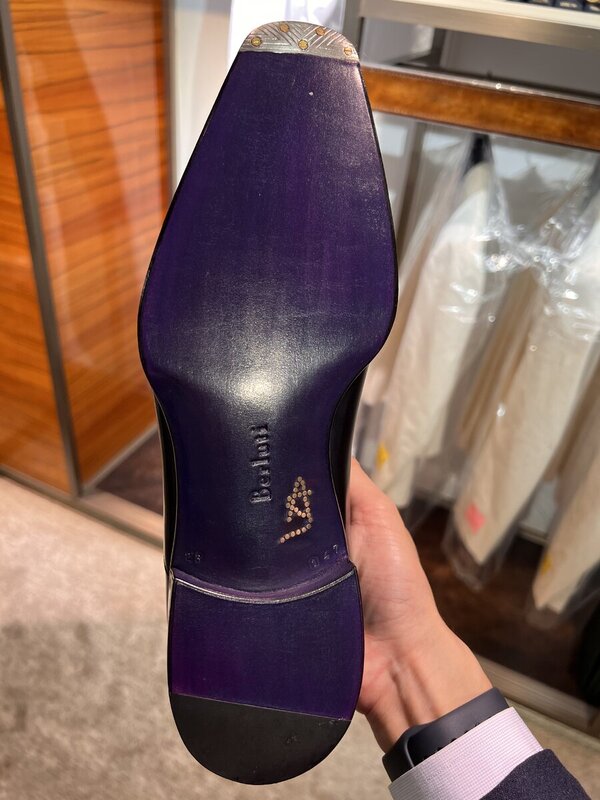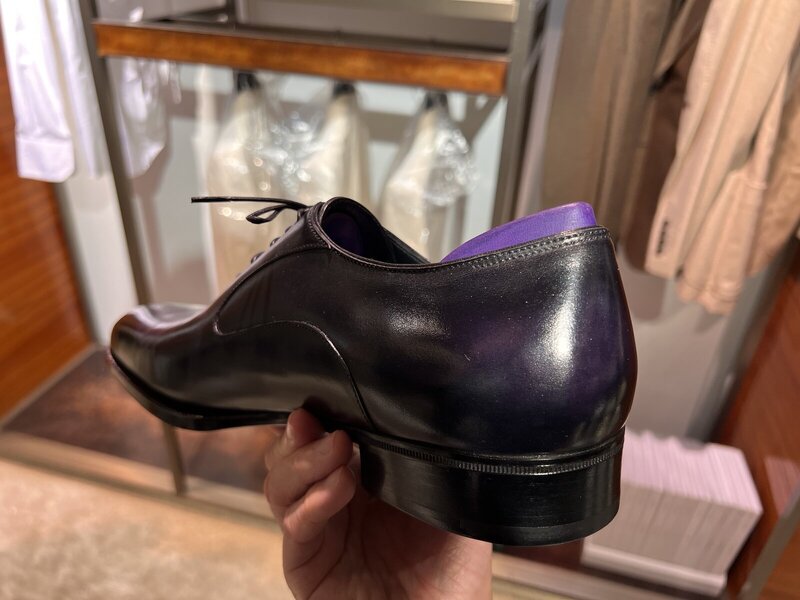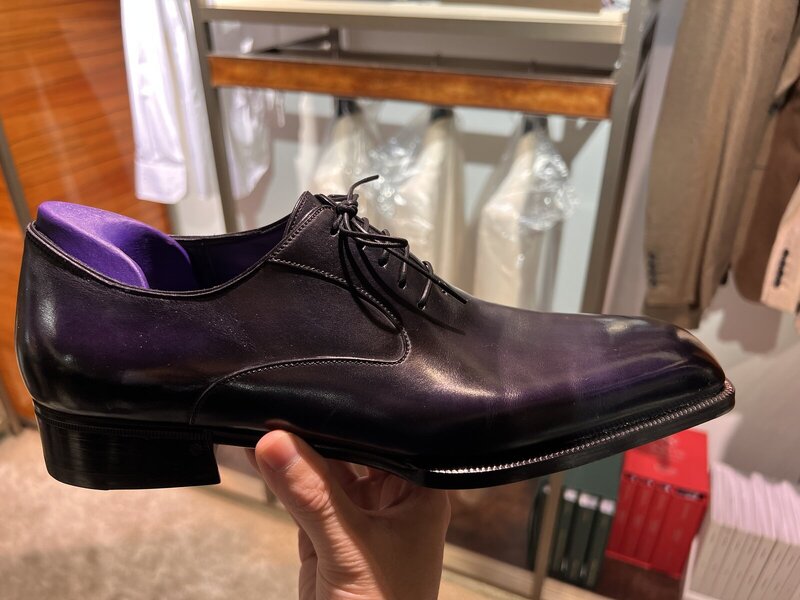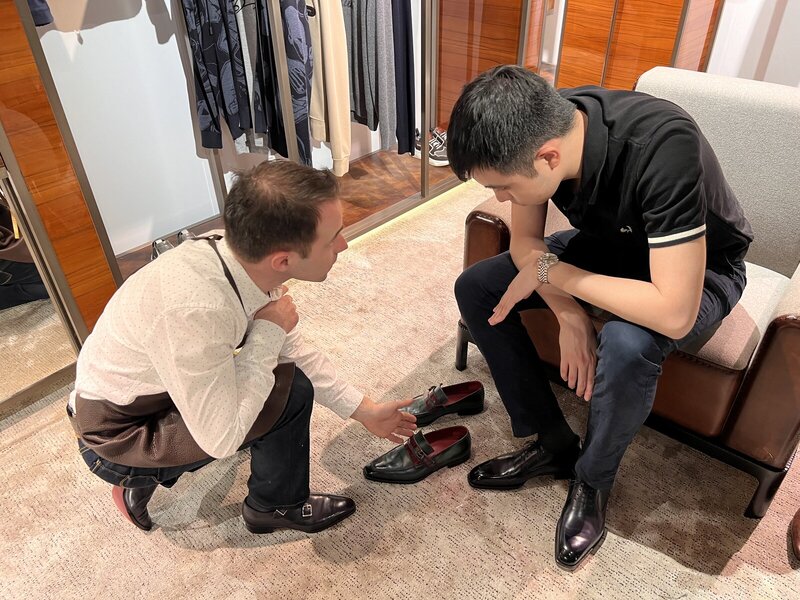- Joined
- Apr 10, 2011
- Messages
- 27,320
- Reaction score
- 69,986
In English shoe making, a 'twisted' last is the application of contrapposto into last making. Contrapposto in art (not only Michelangelo's 'David' but thousands of depictions of the human body in painting and sculpture) places the lines of shoulder and pelvis onto different planes, so they are twisted against each other. This introduces a dynamic and tension, but also ease into the human figure, which a straight plonked -down figure (like the proverbial 'sack of potatoes') does not have.
That same applies to the twisted last. The lines of joint and heel are twisted against each other: the joint line slopes down towards the inside, which raises the outside while the heel line slopes down to the outside. With the difference being some 2 or 3 mm, I cannot see how that can have a major effect on the overall shoe, let alone have the beneficial effects Kirby describes. I've just checked one of my lasts and I wouldn't call it twisted as both, joint- and heel-line both slope down equally towards the inside. It is quite possible that an experienced last maker might make customer-based decisions whether to introduce a twist or leave it out.
I have problems to understand your 'rocking' of the shoe, I can't even work out whether the rocking goes from left to right or front to back. But rocking on the table is one thing, rocking with your weight inside the shoe (getting sea-sick from walking) is another thing.
Anyhow, Cleverley are going to remake the shoes and hopefully all the problems will be sorted out in due course.
By rocking I meant left to right. Kirby basically demonstrates it in his unboxing video.
I've read all sorts of explanations for this twisted last, but I'll be honest, I don't find any of them very convincing. Having talked to other Clev customers, it seems like they're often happy to send things out when they shouldn't be. It makes me think they're overloaded and not very good about quality control. And if the twisted last isn't consistent from order to order -- some people get it, some don't -- I can't help but think it's not a result of just knocking things out of the workshop.
I mean, if a tailor delivered a suit to me with a twisted sleeve and explained it with contrapposto and how it prevents wrinkling, I think I'd do one of those Jim "look at the camera" takes in The Office.
Didn't we have some discussion on the leather thread where you said something like consumers shouldn't need to research themselves to nitpick the quality and should trust the brand. Quality should be apparent or something to that extent.
Yes, I still believe that. Meaning, even if Cleverley explained the issues away, I still wouldn't think they were great shoes.
![Fing02[1] :fonz: :fonz:](/styleforum_ads/smilies/fing02[1].gif)








